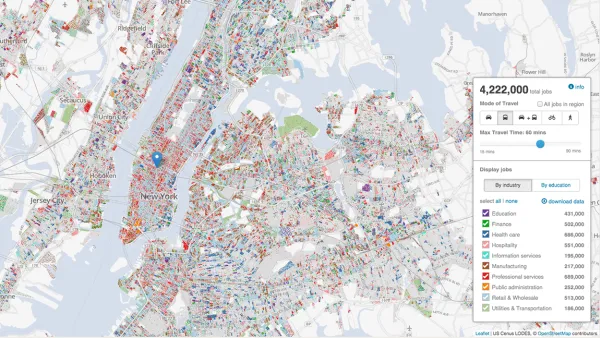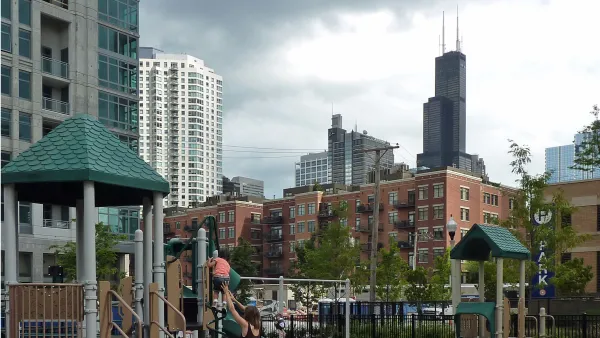In Chicago, like in many cities, local food production comes in many forms, from small backyard crops to community gardens. Researchers are now using Google Earth to paint a more accurate picture of food production at different scales.
Cities are becoming increasingly interested in taking stock of “how much food is being produced within their limits," reports Sarah Zielinksi, adding, “[but they] can only guess at where exactly crops are growing.” After a frustrating attempt by graduate students at the University of Illinois at Urbana-Champaign to verify a list of 1,200 supposed community garden projects in Chicago found only 13 percent of the sites were used to grow food, graduate student John Taylor turned to Google Earth for help.
"Taylor found 4,648 sites with signs of food production — like rows of plants — covering more than 65 acres in total. Visits to a selection of those sites confirmed that 86 percent were actual places of food production."
Why this confusion? "Urban agriculture is sometimes thought of as something new and trendy, but of course people have been growing food in backyards and on vacant land for generations," Taylor says. "From a planning and policy perspective, we have to consider food production at multiple scales."
Taylor's Google-aided data is being used to develop the Chicago Urban Agriculture Mapping Project (CUAMP), a catalog of all of the city's agricultural sites.
FULL STORY: How Google Earth Revealed Chicago's Hidden Farms

Analysis: Cybertruck Fatality Rate Far Exceeds That of Ford Pinto
The Tesla Cybertruck was recalled seven times last year.

National Parks Layoffs Will Cause Communities to Lose Billions
Thousands of essential park workers were laid off this week, just before the busy spring break season.

Retro-silient?: America’s First “Eco-burb,” The Woodlands Turns 50
A master-planned community north of Houston offers lessons on green infrastructure and resilient design, but falls short of its founder’s lofty affordability and walkability goals.

Test News Post 1
This is a summary

Analysis: Cybertruck Fatality Rate Far Exceeds That of Ford Pinto
The Tesla Cybertruck was recalled seven times last year.

Test News Headline 46
Test for the image on the front page.
Urban Design for Planners 1: Software Tools
This six-course series explores essential urban design concepts using open source software and equips planners with the tools they need to participate fully in the urban design process.
Planning for Universal Design
Learn the tools for implementing Universal Design in planning regulations.
EMC Planning Group, Inc.
Planetizen
Planetizen
Mpact (formerly Rail~Volution)
Great Falls Development Authority, Inc.
HUDs Office of Policy Development and Research
NYU Wagner Graduate School of Public Service



























